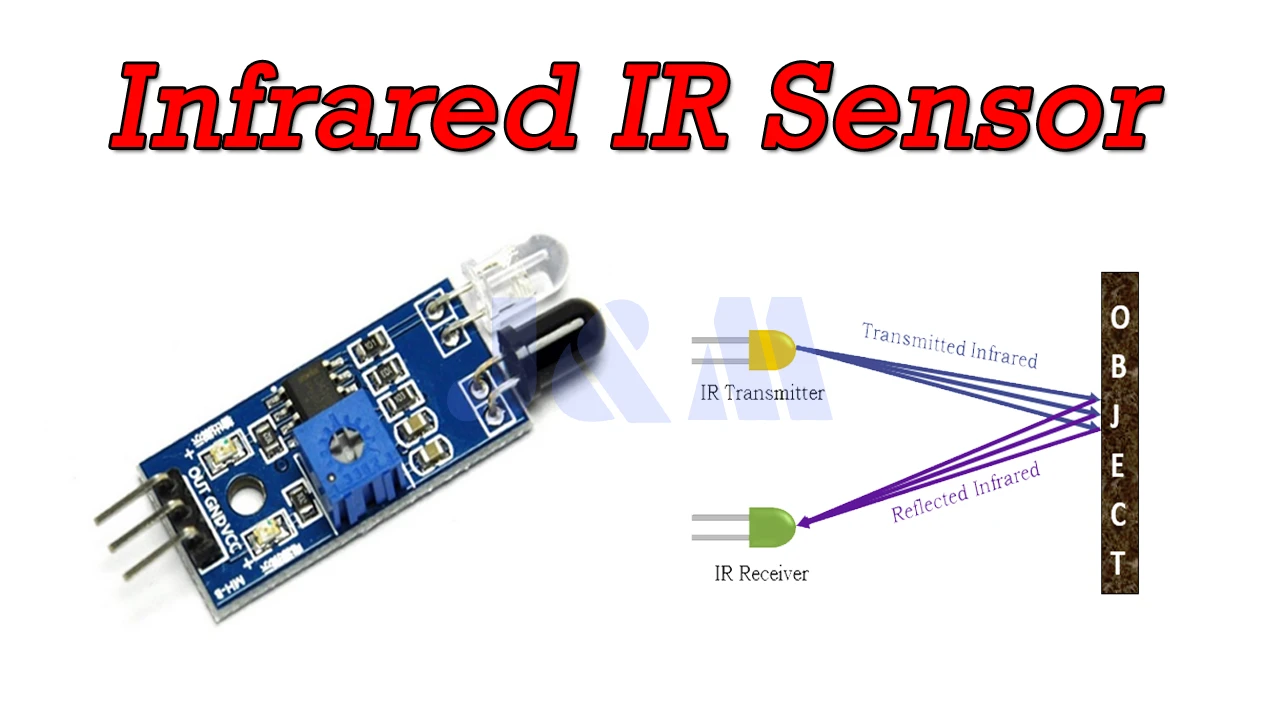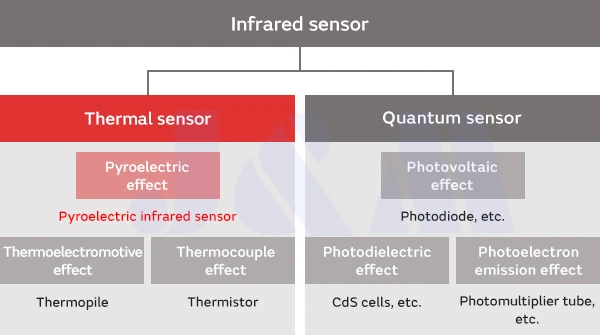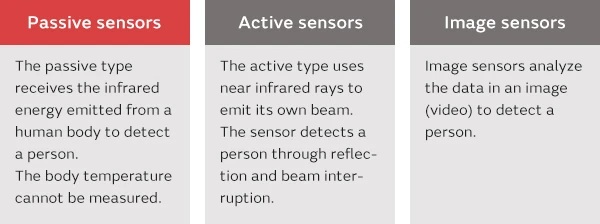|
Home / The Blog /What Is an IR Sensor? How Does an IR Sensor Work?/
What Is an IR Sensor? How Does an IR Sensor Work?
Catalog Today, infrared technology is widely used in various wireless applications, primarily for object sensing and remote control purposes. In the electromagnetic spectrum, infrared is divided into three segments: the near-infrared region, the mid-infrared region, and the far-infrared region. In this blog, we will explore the working principle of IR sensors and their applications.
An IR sensor, or infrared sensor, is an electronic component designed to detect specific characteristics in its environment by emitting or detecting infrared radiation. These sensors can measure the heat of a target and its motion. In many electronic devices, the IR sensor circuit is a crucial module, functioning similarly to human vision by identifying obstacles. A typical infrared detection system consists of five basic elements: an infrared source, a transmission medium, optical components, infrared detectors or receivers, and signal processing. Infrared lasers and infrared LEDs of specific wavelengths serve as the infrared sources. The three primary types of media for infrared transmission are vacuum, atmosphere, and optical fibers. Optical components are employed to focus infrared radiation or to restrict the spectral response. A sensor that measures infrared radiation without emitting it is known as a PIR, or passive infrared sensor. In the infrared spectrum, the radiation from various targets and certain types of thermal radiation are invisible to the naked eye but can be detected by IR sensors. In this type of sensor, an IR LED serves as the emitter, while a photodiode acts as the detector. When infrared light hits the photodiode, the output voltage and resistance change in relation to the intensity of the received IR light. Infrared sensors can be broadly categorized into "thermal" and "quantum" types based on their operational principles. Thermal sensors convert infrared rays into heat, which then leads to changes in resistance and the term electromotive force that produces an output. In contrast, quantum sensors operate using the photoconductive effect related to the energy transitions of semiconductors and the photovoltaic effect in PN junctions. Pyroelectric infrared sensors are a specific type of thermal sensor.
Human body detection is one application of pyroelectric infrared sensors. Generally, there are three types of human detection sensors, with pyroelectric infrared sensors categorized as passive sensors.
An IR Sensor operates similarly to an object detection sensor, with the main difference being that the IR sensor includes an LED and a photodiode for emitting and detecting signals. This combination creates what is known as an optocoupler or photo-coupler. The infrared light-emitting diode (LED) is a specialized transmitter capable of emitting infrared radiation. While it resembles a standard diode, the radiation it produces is invisible to the human eye. The basic principle involves having infrared receivers on one side and transmitters on the other, where the receivers detect the radiation emitted by the IR transmitters. The receivers are typically photodiodes, but these are not ordinary photodiodes. They only activate in the presence of infrared radiation. It’s also worth mentioning that IR receivers vary in terms of packaging, wavelength, voltage, and other factors. For an infrared sensor to function effectively, both the transmitter (IR LED) and receiver (IR photodiode) must operate at the same wavelength. If the wavelengths differ, the photodiode will not respond to the infrared light emitted by the LED. The infrared sensor offers several advantages, including: Low power consumption Strong immunity to noise Ability to detect motion regardless of lighting conditions Resistance to rust Non-contact detection capability No data leakage due to the directional nature of infrared radiation Compact size and affordability Faster response time compared to thermocouples High reliability However, infrared sensors also have some disadvantages: Requires a clear line of sight Performance can be affected by environmental conditions such as fog, rain, pollution, and dust Can be obstructed by common objects Slower data transmission rates Limited range High-intensity IR signals can be harmful to human eyes Infrared sensors are used in various applications, including: Rail safety IR imaging devices Infrared astronomy Optical power meters Night vision devices Sorting devices Moisture analyzers Missile guidance Flame monitors Remote sensing Climatology Gas analyzers Meteorology Photobiomodulation Petroleum exploration Anesthesiology testing Gas detection Water analysis 1, What’s the Function of Infrared? Infrared technology has a variety of applications beyond just heat sensing. It plays a significant role in networking, communication, thermal imaging, and even night vision devices. Whether wired or wireless, infrared can enhance many operations effectively. 2, Are Infrared Sensors Dangerous? Like any technology, infrared sensors can pose risks if misused. However, there have been no reported injuries from exposure to infrared sensors, indicating that they are generally safe and reliable. It’s still wise to use caution when handling any technology. 3, Can You Operate IR Sensors In the Dark? Infrared sensors are fully operational in the dark, which is why PIR motion sensors can detect movement at night. Just because infrared energy is invisible does not mean it isn't present or detectable in low-light conditions. This overview focuses on infrared sensors, commonly used in wireless technology for detecting surrounding objects and enabling remote control functions. The key features of these sensors include motion and heat detection. Notably, the infrared spectrum is invisible to the human eye. This article is from JMChip Electronics which offer electronic components, semiconductors, antennas, capacitors, connectors, diodes, transistors, ICs, and resistors. For more product information, please go to the website to get it.
Amanda Miller Amanda Miller is a senior electronics engineer with 6 years of experience. She focuses on studying resistors, transistors, and package design in detail. Her deep knowledge helps her bring innovation and high standards to the electronics industry. Subscribe to JMChip Electronics ! Related Articles Ultrasonic Sensors: Key Solutions for Medical & Industrial Use Motion Sensors:Description,Components and Types Pressure Sensors:A Complete Guide What is a Steering Angle Sensor? What Temperature Sensor is & How It Works What Is a Motion Sensor and How Does It Work Complete Guide to Current Sensor ABF025 Proximity Sensors:Applications and Types The Guide to Occupancy Sensors for Your Workplace Analog vs. Digital Sensors: Key Differences Explained Popular parts number
STM32F103C8T6 STMicroelectronics IC MCU 32BIT 64KB FLASH 48LQFP
ULN2803ADWR Texas Instruments(TI) TRANS 8NPN DARL 50V 0.5A 18SO
LM358DR Texas Instruments(TI) IC OPAMP GP 2 CIRCUIT 8SOIC
STM32F407VET6 STMicroelectronics IC MCU 32BIT 512KB FLASH 100LQFP
ATMEGA2560-16AU Microchip Technology IC MCU 8BIT 256KB FLASH 100TQFP
MAX13487EESA+ Analog Devices Inc.(ADI) IC TRANSCEIVER HALF 1/1 8SOIC
XCF04SVOG20C AMD IC PROM SRL FOR 4M GATE 20-TSSOP
PIC16F716-I/SO Microchip Technology IC MCU 8BIT 3.5KB FLASH 18SOIC
EPM3064ATI44-10N Intel IC CPLD 64MC 10NS 44TQFP
STM32F207ZGT6TR STMicroelectronics IC MCU 32BIT 1MB FLASH 144LQFP Leave Us A Message!
We`re not around but we still want to hear from you! Leave us a note: SEND
*You can contact us directly on WhatsApp! (责任编辑:) |



















